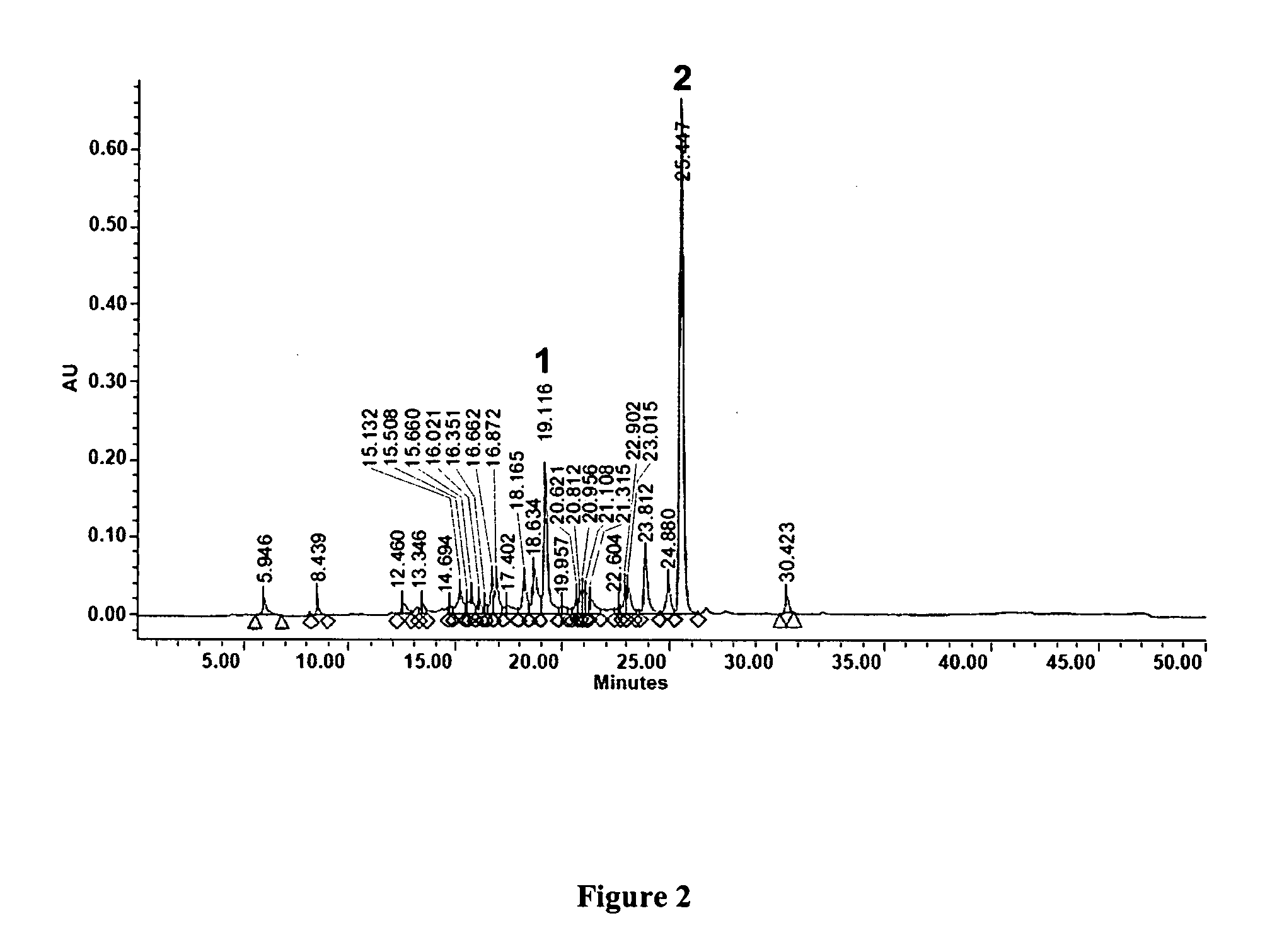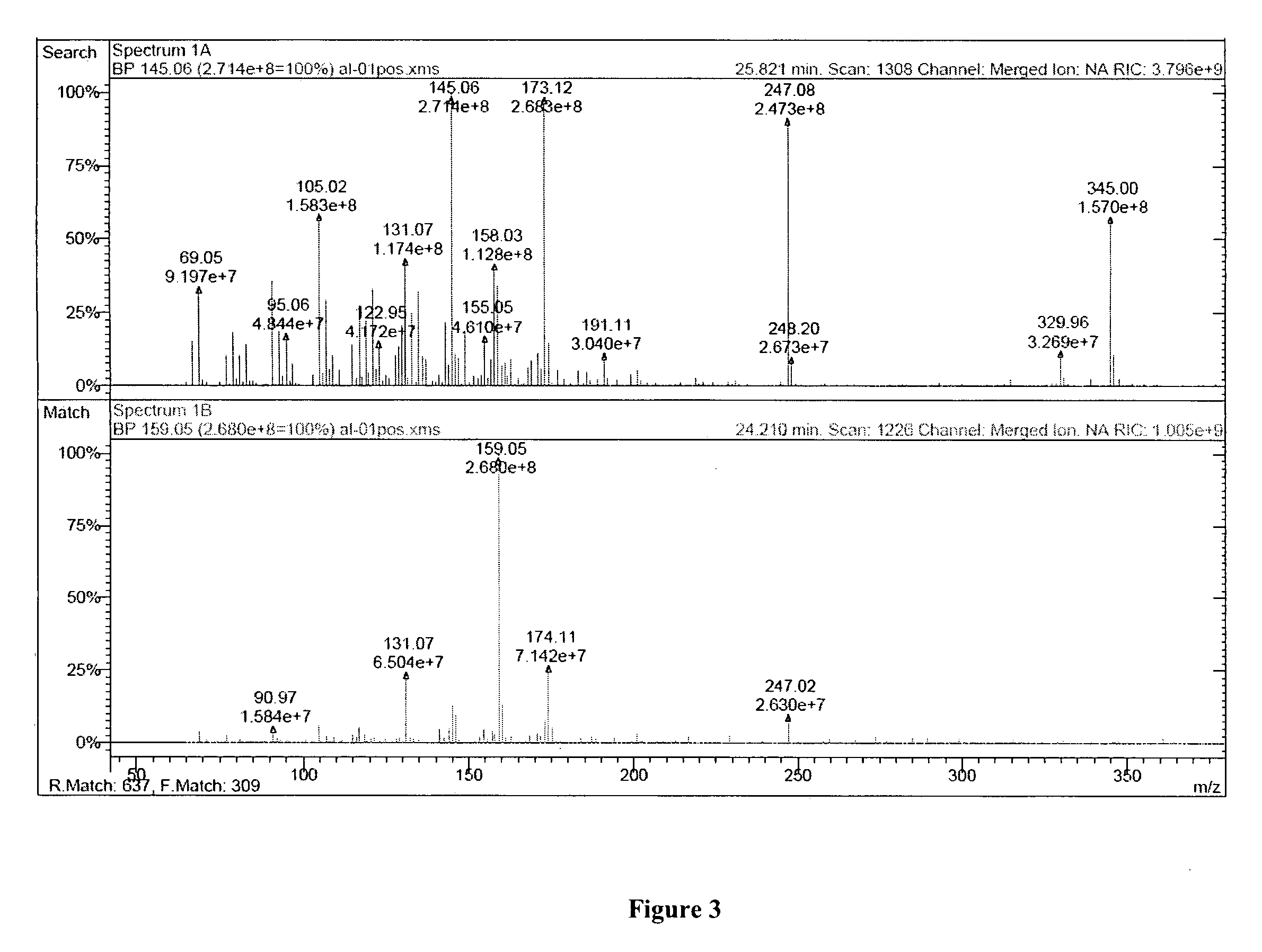Sesquiterpene lactone extract from artemisia leucodes for reducing inflammation and down-regulating pro-inflammatory gene expression
a technology of artemisia leucodes and lactone extract, which is applied in the direction of biocide, cardiovascular disorder, drug composition, etc., can solve the problems of reducing the use of certain segments of the population, significant negative side effects, etc., and achieve the effect of reducing inflammation
- Summary
- Abstract
- Description
- Claims
- Application Information
AI Technical Summary
Benefits of technology
Problems solved by technology
Method used
Image
Examples
example 1
Extraction Procedure
[0029]Leaves from Artemisia leucodes were dried and soaked in 95% ethanol (1:5 w / v) for 24 hours at room temperature (24° C.). This process was repeated three times and the collected extracts were combined. The ethanol was removed using a rotary evaporator to the point where the extract was 10% of the original volume. The resulting extract was diluted with water (1:1 v / v) and filtered before partitioning with chloroform (1:1 v / v). The chloroform was removed using a rotary evaporator and the resulting extract, hereupon termed AL-1, was lyophilized and stored at 4° C.
example 2
Compositional Analysis of AL-1
LC-MS Analysis
[0030]LC-MS was employed to determine the sesquiterpene lactone content of AL-1. AL-1 was separated and analyzed with the Waters (Milford, Mass.) LC-MS Integrity™ system consisting of a solvent delivery system including a W616 pump and W600S controller, W717 plus auto-sampler, W996 PDA detector and Waters TMD Thermabeam™ electron impact (EI) single quadrupole mass detector. Data were collected & analyzed with the Waters Millennium® v. 3.2 software, linked with the 6th edition of the Wiley Registry of Mass Spectral Data, containing 229,119 EI spectra of 200,500 compounds. Substances were separated on a Phenomenex® Luna C-8 reverse phase column, size 150×2 mm, particle size 3 μm, pore size 100 Å, equipped with a Phenomenex® SecurityGuard™ pre-column. The mobile phase consisted of 2 components: solvent A (0.5% ACS grade acetic acid in double distilled de-ionized water, pH 3-3.5), and solvent B (100% acetonitrile). The mobile phase flow was a...
example 3
[0034]All data are expressed as means±SE. One-way ANOVA (analysis of variance) was used to determine the significance of treatments in animal studies. Student's t-test was carried out to determine the significance of difference between control and treatments in the COX enzyme and Griess assay. Treatments were considered significantly different if p<0.05.
PUM
 Login to View More
Login to View More Abstract
Description
Claims
Application Information
 Login to View More
Login to View More - R&D
- Intellectual Property
- Life Sciences
- Materials
- Tech Scout
- Unparalleled Data Quality
- Higher Quality Content
- 60% Fewer Hallucinations
Browse by: Latest US Patents, China's latest patents, Technical Efficacy Thesaurus, Application Domain, Technology Topic, Popular Technical Reports.
© 2025 PatSnap. All rights reserved.Legal|Privacy policy|Modern Slavery Act Transparency Statement|Sitemap|About US| Contact US: help@patsnap.com



